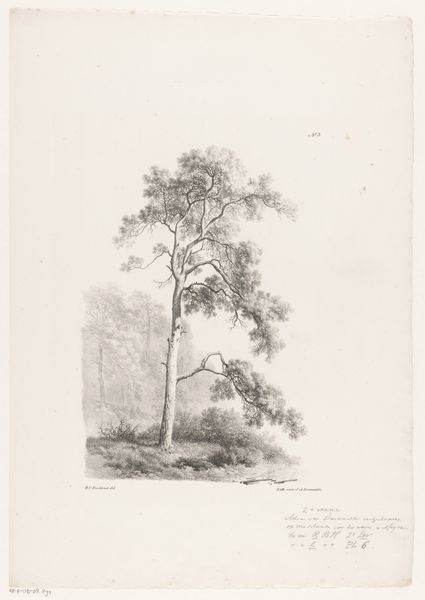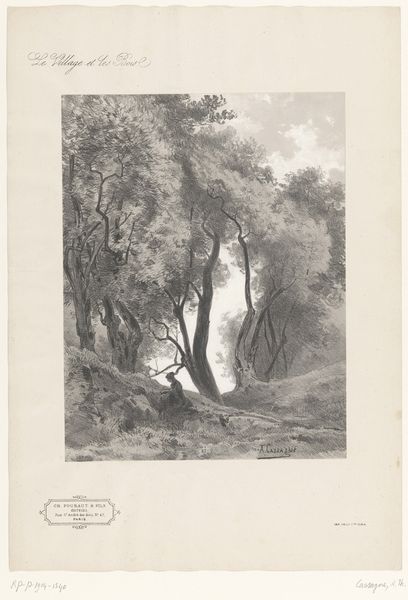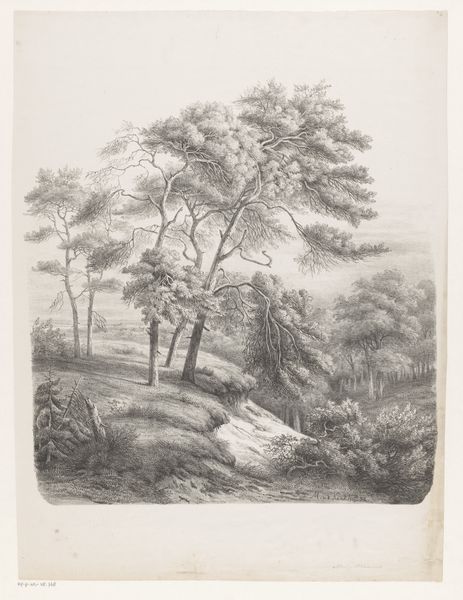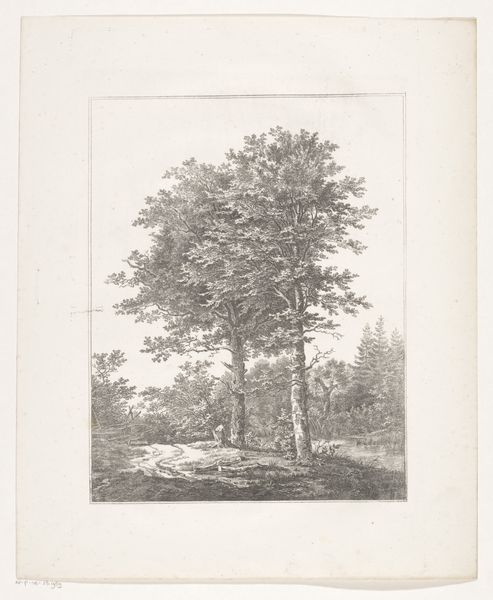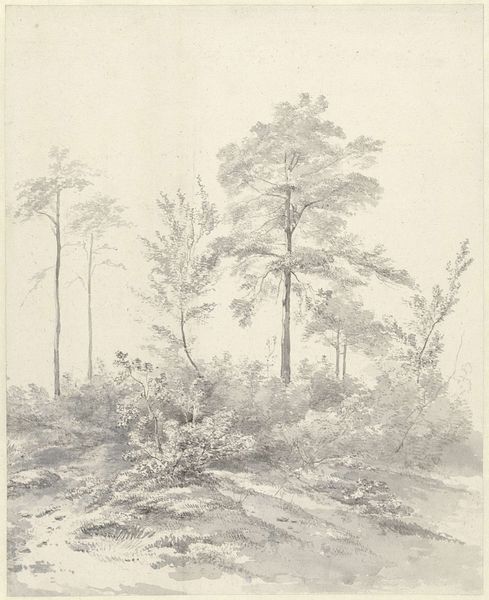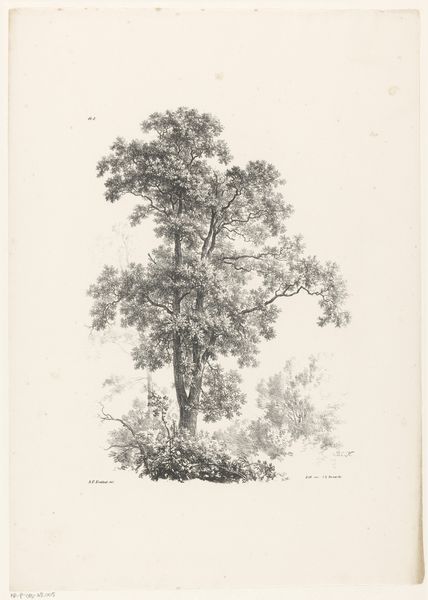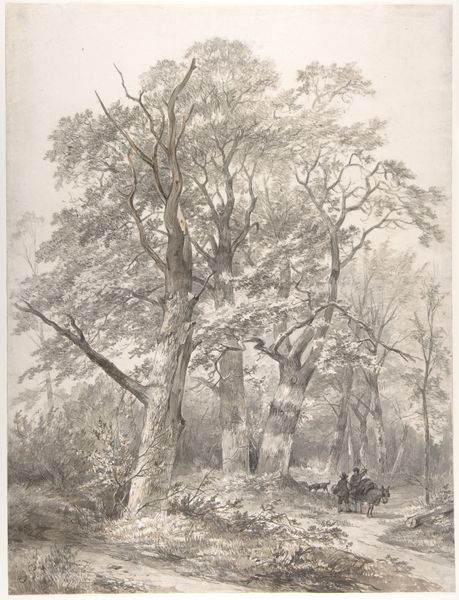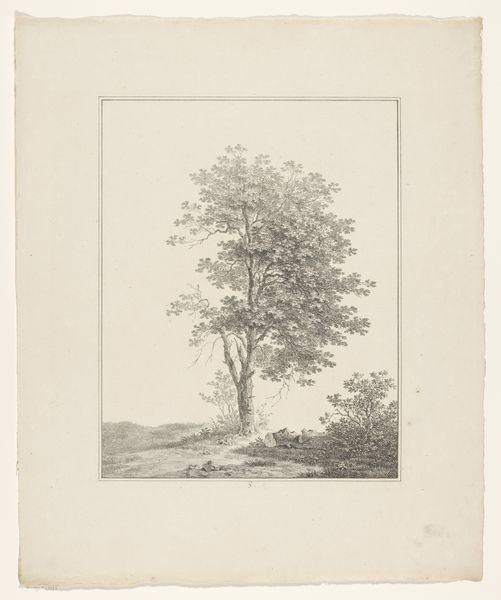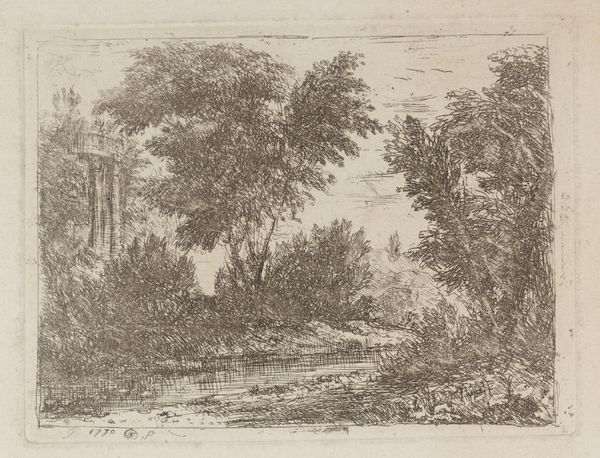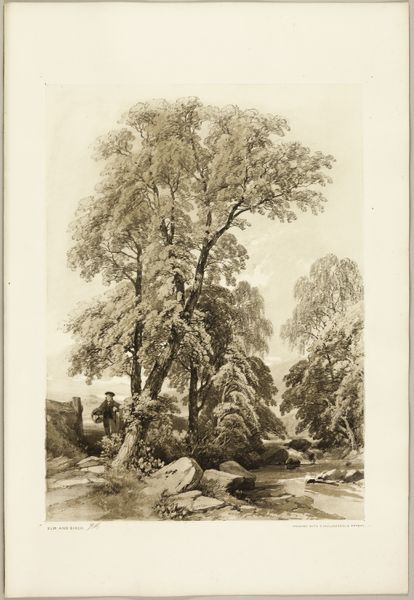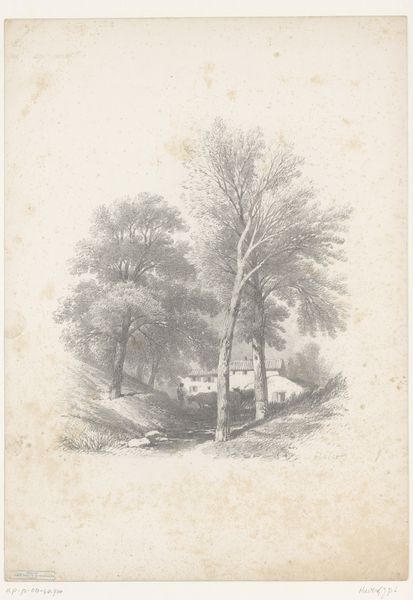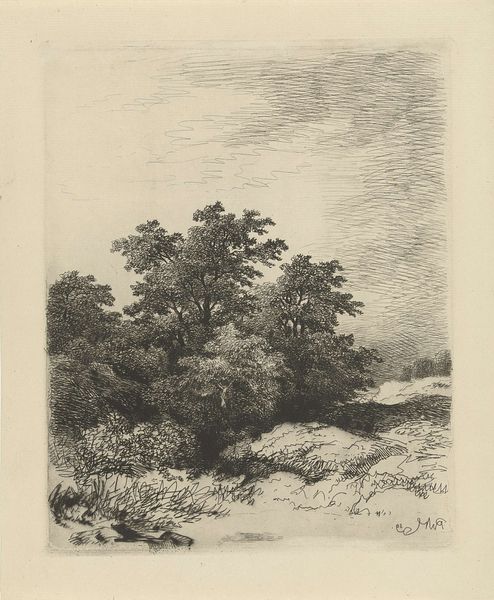
drawing, pencil
#
pencil drawn
#
drawing
#
pen sketch
#
pencil sketch
#
landscape
#
road
#
romanticism
#
pencil
#
sketchbook drawing
#
realism
Dimensions: height 520 mm, width 410 mm
Copyright: Rijks Museum: Open Domain
Curator: Let’s discuss Adrianus van der Koogh’s “Groep bomen bij boerderij,” a pencil drawing from 1826-1828, housed here at the Rijksmuseum. Editor: This pencil drawing evokes a strong sense of tranquility. What stands out to me most is the artist’s meticulous approach in rendering each detail, from the leaves on the trees to the texture of the farmhouse roof. What can you tell me about this work? Curator: I’m particularly interested in the materiality of this piece. Think about the accessibility of pencil as a medium in the early 19th century. Who had access to it? Who was producing the graphite, the paper? The image itself depicts a seemingly simple rural scene, but we should also consider this work through the lens of labour and material production. How might the consumption of images like this relate to broader economic and social structures? Editor: So, it's not just about the landscape, but about the societal forces that allowed its creation and consumption. That's interesting. Were landscape drawings like this typically commissioned? Or was this more of a personal study? Curator: Good question. We have to remember that landscape art in this period served varied purposes, from scientific record to expressions of national identity and nascent tourist industries. Perhaps van der Koogh’s rendering is both a study of the local topography and, in its own way, a commodity aimed at a specific clientele. Think about how this relates to notions of leisure, ownership, and even the emerging concept of environmental awareness. Editor: That provides a lot to consider. Thanks for this new way of considering the work! Curator: Indeed. By focusing on the material and production aspects, we can explore much broader connections between art, society, and the environment in van der Koogh’s time.
Comments
No comments
Be the first to comment and join the conversation on the ultimate creative platform.
